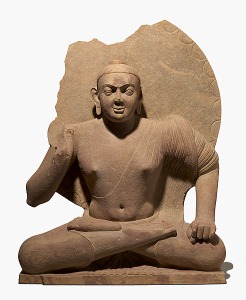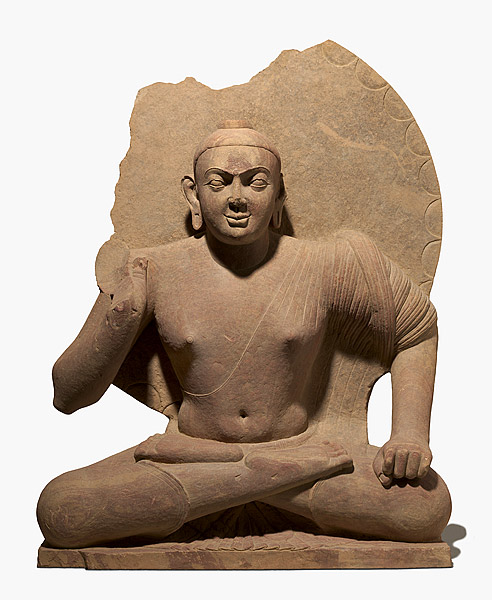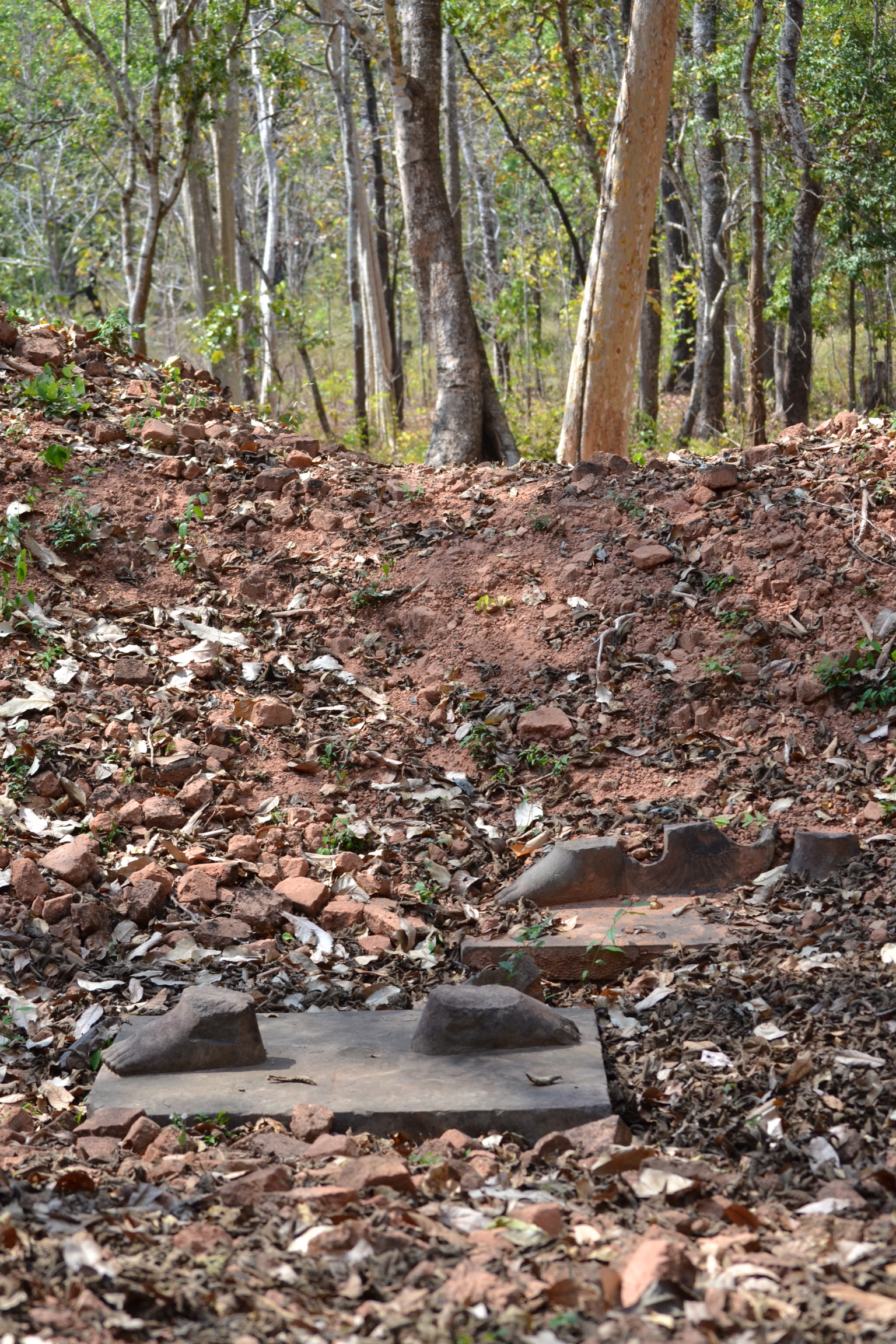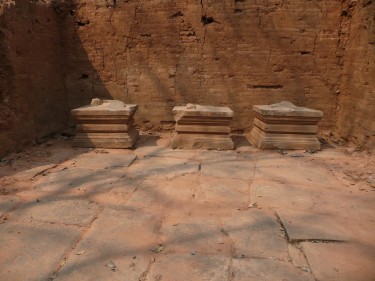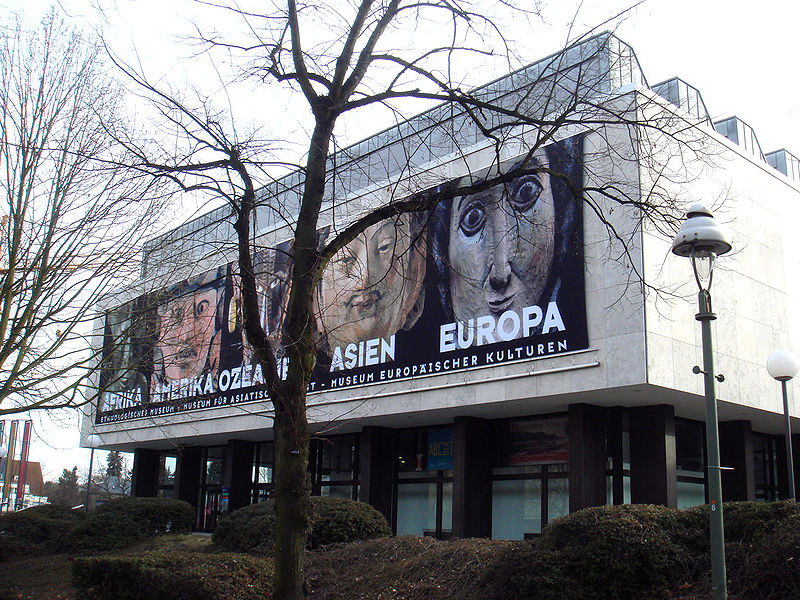Search the website:
-
BUY THE BOOK

AVAILABLE VIA
-
Recently
- 2/21/23 at the Natural History Museum of Utah: “Chasing Shiva: The Hunt for Looted South and Southeast Asia Antiquities” September 2, 2023
- UPDATED > USA vs One Ancient Mosaic: A Looted Syrian Masterpiece in Los Angeles May 26, 2018
- The Sidon Bull’s Head: Court Record Documents a Journey Through the Illicit Antiquities Trade September 24, 2017
- Hobby Lobby’s Legal Expert Speaks: “I can’t rule out…they used my advice to evade the law.” July 10, 2017
- UPDATED > Help Wanted: We’re Tracking Down Objects Sold By Nancy and Doris Wiener January 5, 2017
- UPDATED > Manhattan Dealer Nancy Wiener Arrested: Criminal Complaint Alleges Sweeping Conspiracy to Sell Stolen Asian Art Through Major Auction Houses December 21, 2016
- UPDATED > Inside the ISIS Looting Operation: U.S. Lawsuit Reveals Terror Group’s Brutal Bureaucracy of Plunder December 15, 2016
- The End of the Beginning: NGA Returns Kushan Buddha and Two Kapoor Objects September 18, 2016
- The Missing Link: Subhash Kapoor’s Suppliers in India Are (Finally) Getting Rolled Up July 3, 2016
- The Lessons of Palmyra: Iconoclasm in the era of Clickbait April 7, 2016
- UPDATED > Asia Week Arrest: Japanese Dealer Convicted Of Selling Stolen Art March 19, 2016
- Asia Week Raids: New Details on the Christie’s Seizures March 18, 2016
- Busted: Asia Week Raids Reveal Scope of Illicit Trade in Asian Art March 17, 2016
- The Crennan Report: The NGA’s Ex Post Facto Due Diligence Finds 22 “Questionable” Asian Antiquities February 17, 2016
- Operation Antiquity: Prison for Antiquities Dealer Behind Looting and Tax Fraud Scheme December 15, 2015
- Ball State’s Kapoor Return Reveals New False Provenance November 17, 2015
- The Seated Buddha Goes Home: Nancy Wiener and National Gallery of Australia Will Return Sculpture to India March 5, 2015
- The Kushan Buddhas: Nancy Wiener, Douglas Latchford and New Questions about Ancient Buddhas February 1, 2015
- Danti’s Inference: The Known Unknowns Of ISIS and Antiquities Looting November 18, 2014
- Hecht’s Footprints: Haverford College Opens Up About Source of Their Greek Vases November 4, 2014
-
Join 1,764 other subscribers
What we’re talking about
AAMD American Numismatic Society antiquities Aphrodite archaeology Arnold-Peter Weiss art crime Arthur Houghton Art of the Past Asian Civilizations Museum book review Cambodia Chasing Aphrodite Christies Cleveland Museum Dallas Museum of Art David Gill Dietrich von Bothmer Douglas Latchford Edoardo Almagià Elie Borowski Events FBI Gary Vikan Getty Museum Getty Villa Giacomo Medici Gianfranco Becchina Hugh Eakin illicit antiquities Immigration and Customs Enforcement India Italy J. Paul Getty Museum J. Paul Getty Trust James Cuno james grimaldi Jane Levine Jim Cuno Jiri Frel Khmer Kimbell Art Museum Koh Ker Loot looted antiquities looting Marion True Metropolitan Museum of Art Michaela Boland Michael Padgett museums Nancy Wiener National Gallery of Australia New York Review of Books Nomos AG Norton Simon Museum numismatics Princeton University repatriation Robert Hecht Robin Symes Ron Radford SAFE scandal Selina Mohamed Sicily Sotheby's Subhash Kapoor Tamil Nadu The Art Newspaper Timothy Potts Turkey Vijay Kumar Walters Museum of Art WikiLoot David Gill’s Looting Matters
David Gill’s Looting Matters- Another Bubon bronze head likely to be repatriated
- The Stern Collection in New York: Cycladic or Cycladicising?
- The Carlos Museum: Time to Reflect?
- Returns to Greece from Michael C. Carlos Museum
- Silver Pyxis Lid Returned from VMFA
- Gnathian Askos Returned from Virginia MFA
- Virginia MFA Returns Antiquities
- Bubon Bronzes Returning to Türkiye
- The Parthenon Sculptures and the political arena
- The Wild Goat Plate Fragment and Francavilla Marittima
 Paul Barford’s Portable Antiquities and Heritage Issues
Paul Barford’s Portable Antiquities and Heritage Issues- Milo Rossi: You Tube Pseudoscience Commentator "Miniminuteman"
- Graham and Holly Take on Archaeology
- Heritage in Danger: Hammer-Wielding Fanatics in Museum Gallery
- More on those Hyper-Precise "Ancient Lathe-Turned Vessels" from the Antiquities Market
- UK Museum Theft
- British Archaeology and Duodecahedral Mystery Fever (I): The PAS Boost Their Recording Statistics
- British Archaeology and Duodecahedral Mystery Fever (II): The Archaeology Group Struts its Stuff
- British Archaeology and Duodecahedral Mystery Fever (III): This is Mine!
- Granite Vase Fantasies: Rubbish In, Rubbish Out
- Dodecahedron "Mystery" Brings in Money for the Dealers
 Derek Fincham’s Illicit Cultural Property
Derek Fincham’s Illicit Cultural Property- Alleged Bubon Smuggling Network Widens
- Marlowe on the Real Issue with the Glyptotek Head
- 27 Objects Seized From the Met
- Smash and Smash at the Dallas Museum of Art
- Elizabeth Marlowe’s Review of ‘The Brutish Museum’
- The Terrific Pandora Papers Looted Art Article
- Italian Senate renews call for return of the ‘Bronze Statue of a Victorious Youth’
- Psychics, Bowie knives, fake Alamo artifacts: New Book out today on how Texas can’t shake the Alamo
- Online Symposium on the Benin Bronzes Friday Apr. 9
- University of Aberdeen will repatriate a Benin bronze to Nigeria
 Conflict Antiquities
Conflict Antiquities- Russia was ‘doomed to expand [its] aggression’ against Ukraine: Cultural property criminals’ responses to the invasion and occupation of the Donbas since 20th February 2014
- propagandist fighter Maxim Fomin and the supply of metal detectors by artefact hunters for mine clearing by Russia’s forces in Ukraine
- Destructive Exploitation and care of Cultural Objects and Professional/Public Education for sustainable heritage management (DECOPE)
- a very low estimate of metal-detecting in the United Kingdom, according to the Portable Antiquities Scheme
- loot and forgeries from Eastern Europe on the market in Western Europe, regardless of Russia’s war on Ukraine
- artefact-hunting in drug plantations and by cannabis-cultivators in Ukraine (around 2014)
- attitudes to personal and public health precautions among artefact-hunters amid the Covid-19 pandemic
- human rights worker and anti-imperialist fighter Maksym Butkevych has been captured by Russia’s invading forces
- Russia’s destruction of Ukraine’s cultural property is proof of its intent to commit genocide.
- Russia is subjecting cultural heritage workers and other civilians to the war crime of forced military labour.
 The Association for Research into Crimes against Art
The Association for Research into Crimes against Art- When morality stops with one's own favourite coin(s).
- Celebrating our 13th year of academic conferences addressing art and antiquities crimes, ARCA will host its summer interdisciplinary art crime conference the weekend of June 21-23, 2024.
- Carabinieri Command: Safeguarding Italy's Cultural Heritage for 55 years
- The European Court of Human Rights has rejected the J. Paul Getty Museum’s appeal and upholds the decision issued by Italian authorities on the recovery of the “Victorious Youth”
- Georgia's Prosecutor Pursues Criminal Charges Against Four Nationals in Book Theft Investigation
- When a money launderer's art collection comes up for auction
- Christ Church Picture Gallery painting by Baroque painter Salvator Rosa recovered in Romania
- Spain's antiquities dealer arrest and the importance of facts-based reporting
- Arrest made in Spain on Egyptian antiquities smuggling case.
- Stolen Saint: Ukraine Authorities Retrieve the Holy Warrior Bas-Relief of Saint Demetrius of Thessaloniki from an Online Auction
Meta
Tag Archives: Douglas Latchford
VideoThe Seated Buddha Goes Home: Nancy Wiener and National Gallery of Australia Will Return Sculpture to India
The National Gallery of Australia announced Thursday that its prized second century Seated Buddha would be “donated” to India after the museum struck a deal for its return with Nancy Wiener, the New York gallery owner who sold the statue.
Under the deal, Wiener will reimburse the NGA the $1.080 million paid for the statue in 2007 and arrange for its return to India, the museum said in a statement.
The arrangement marks a rare case of a museum making good on a dealer’s good title guarantee at the time of sale.
I first raised questions about the Buddha in 2012, after an anonymous source contacted me suggesting the statue’s ownership history had been falsified. After the NGA released documents supporting that claim, the museum contacted the expert who had authenticated the sculpture, Donald Stadtner. Stadtner raised further questions about the sculpture’s origins, claiming in an email to museum officials that British collector Douglas Latchford had boasted in a meeting that he had “found Nancy a provenance” for a related Kushan Buddha that Wiener sold to Singapore’s Asian Civilizations Museum. Through his attorneys, Latchford has denied ever meeting Stadtner.
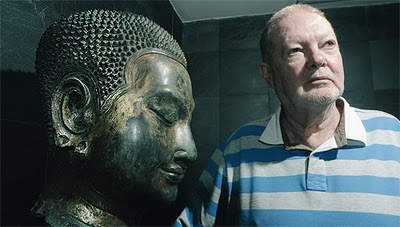 The National Gallery of Australia’s release does not resolve the questions about the sculpture’s provenance. “In 2007, the NGA regarded the information available about the sculpture as adequate at the time of its purchase with documented provenance outside India in 1964-66. As a result of new research undertaken by the NGA, particularly in light of the recently published Australian Government Guidelines for Collecting Cultural material, the NGA considers it unclear as to whether the work’s export from India complies with current Australian law. Given the passage of time, the NGA is of the view that further clarification on this issue is unlikely. Accordingly, the NGA and NWG have agreed that the best course is to donate the work to a museum or other cultural institution located in India.”
The National Gallery of Australia’s release does not resolve the questions about the sculpture’s provenance. “In 2007, the NGA regarded the information available about the sculpture as adequate at the time of its purchase with documented provenance outside India in 1964-66. As a result of new research undertaken by the NGA, particularly in light of the recently published Australian Government Guidelines for Collecting Cultural material, the NGA considers it unclear as to whether the work’s export from India complies with current Australian law. Given the passage of time, the NGA is of the view that further clarification on this issue is unlikely. Accordingly, the NGA and NWG have agreed that the best course is to donate the work to a museum or other cultural institution located in India.”
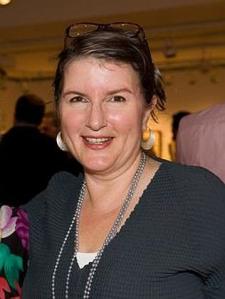 Wiener, who has not responded to requests for comment, stood behind the story she provided the museum in 2007, the statement said. “While the [Nancy Wiener Gallery] affirms its confidence in the provenance of the Seated Buddha, it is dedicated to its relationship with the NGA. Therefore, the NWG has offered to refund the purchase price of the sculpture to the NGA, and to join with the NGA in donating the work to an appropriate Indian cultural institution. Both parties are now working collaboratively in the spirit of good will and with Indian officials to determine an appropriate destination in India for this great work.”
Wiener, who has not responded to requests for comment, stood behind the story she provided the museum in 2007, the statement said. “While the [Nancy Wiener Gallery] affirms its confidence in the provenance of the Seated Buddha, it is dedicated to its relationship with the NGA. Therefore, the NWG has offered to refund the purchase price of the sculpture to the NGA, and to join with the NGA in donating the work to an appropriate Indian cultural institution. Both parties are now working collaboratively in the spirit of good will and with Indian officials to determine an appropriate destination in India for this great work.”
The Buddha’s return sets a new standard for Australian museums that goes far beyond any reforms adopted in the United States. Guidelines adopted by Australian museums in the wake of the Subhash Kapoor scandal require objects to have valid export licenses from their country of origin.
If that standard is applied retroactively, as it has been in the case of the Kushan Buddha, many more objects in Australian museums are likely to be sent home.
The Kushan Buddhas: Nancy Wiener, Douglas Latchford and New Questions about Ancient Buddhas
In 2005, Canada’s Royal Ontario Museum was offered a rare sculpture of a Seated Buddha carved from red sandstone in the second century. It was from India’s ancient city of Mathura, the second capital of the Kushan empire, and one of only a handful of such sculptures to have appeared on the market in recent years.
 The dealer selling the sculpture was Nancy Wiener, whose eponymous Manhattan gallery has been a leading seller of Asian art for years. Her clients include the Metropolitan Museum, the Los Angeles County Museum, the Asia Society and prominent private collectors. Wiener’s mother Doris was a renowned Asian art dealer who Christies’ called “one of the most distinguished tastemakers in this collecting category.”
The dealer selling the sculpture was Nancy Wiener, whose eponymous Manhattan gallery has been a leading seller of Asian art for years. Her clients include the Metropolitan Museum, the Los Angeles County Museum, the Asia Society and prominent private collectors. Wiener’s mother Doris was a renowned Asian art dealer who Christies’ called “one of the most distinguished tastemakers in this collecting category.”
The Royal Ontario was keen to buy the Seated Buddha – until curator Deepali Dewan called the expert who had authenticated the sculpture for Wiener. Donald Stadtner, an authority in Indian art, told Dewan that he believed the statue had been illegally exported from India and given a phony ownership history to cover its tracks.
 After talking to Stadtner, the Royal Ontario Museum decided pass on the sculpture, Dewan confirmed in a recent email. Months later, Wiener offered it to the National Gallery of Australia for USD$1.2 million.
After talking to Stadtner, the Royal Ontario Museum decided pass on the sculpture, Dewan confirmed in a recent email. Months later, Wiener offered it to the National Gallery of Australia for USD$1.2 million.
No Questions Asked at the National Gallery of Australia
Wiener told NGA officials she had purchased the sculpture in 2000, museum records show. Previously, Wiener said, the sculpture had belonged to an Englishman named Ian Donaldson, who claimed to have purchased it while posted in Hong Kong between 1964 and 1966. She provided the museum with a 1985 Certificate of Ownership signed by Donaldson. It was the only record of sculpture’s ownership history, but the museum did not attempt to contact Donaldson.
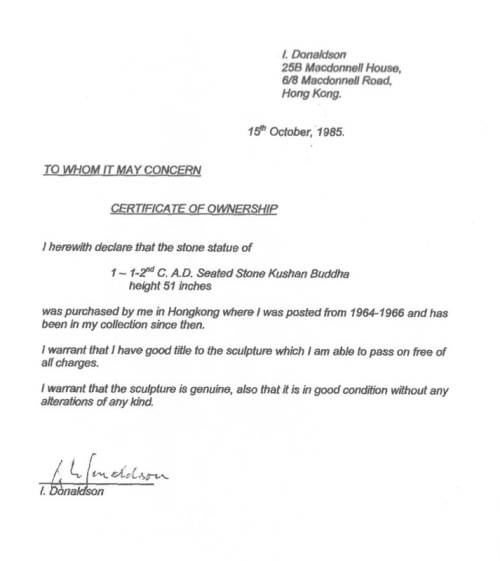
In July 2007, Wiener sent an invoice to the NGA for the discounted price of USD$1,080,000 and a signed guarantee offering to reimburse the museum if the provenance were ever proven false.

Two months later, as preparations for the Buddha’s acquisition were under way, the National Gallery of Australia received a search certificate from the Art Loss Register saying the sculpture was not in its database of stolen objects. Such declarations are largely useless for looted antiquities – as the certificate notes, “the database does not contain information on illegally exported artifacts unless they have been reported to us as stolen.”
Yet this was the extent of the museum’s due diligence. Museum officials never contacted Stadtner, whose authentication report for the Seated Buddha was among the paperwork provided by Wiener. The funds for the purchase were provided in part by Ros Packer, wife of the late media tycoon Kerry Packer and one of Australia’s most prominent philanthropists.
An Anonymous Tip
In 2012, I got an anonymous tip that the sculpture’s ownership history had been fabricated. The source identified the dealer as Nancy Wiener, and suggested the sculptures had been illegally exported from India. I shared the tip with Michaela Boland at The Australian, and in May 2013 we requested the sculpture’s ownership history from the NGA. The museum claimed the information was secret: “We do not provide details of this nature regarding acquisitions from the national art collection for clear commercial in confidence reasons,” museum spokesman David Edhill wrote.
Boland filed a Freedom of Information request for the records. In the fall of 2014, the Australian courts ruled in our favor and released copies of the NGA’s records – with the name of the dealer and former owner redacted. In November, we co-wrote a story in Australian about the case, linking the anonymous tip to the account in the museum records.
The Latchford Connection
In October 2014, as the records were released, the NGA began investigating the ownership history of the sculpture. It was only then that an NGA curator contacted Stadtner and asked him for any information he had about the sculpture’s origins.
In a Nov. 5th email to museum officials, Stadtner explained his long-held suspicions about the sculpture. The NGA’s was the second Kushan Buddha that Stadtner had examined for Wiener, he explained. The first he had studied in 1999 before it was sold to Singapore’s Asian Civilizations Museum.
Some time after, on a visit to Bangkok, Stadtner said he met with the Bangkok-based British collector Douglas Latchford. The main topic of conversation was Latchford’s role in the sale of fake Burmese bronzes, Stadtner said, one of which had been sold to the ACM in Singapore in 2000. While there, however, the two men discussed the ACM’s Seated Buddha.
“During the course of a long conversation (and boasting) Latchford said, en passant, that he found Nancy a provenance for the Buddha which by then was in Singapore,” Stadtner told NGA officials in the email. “I recall that he said that he found ‘an old India hand’ in ‘Hong Kong’. By an old India hand I interpreted this to mean an older English gentlemen who had served in India but who was based then in Hong Kong.”
 Stadtner was convinced the NGA’s Seated Buddha, sold several years later, had been offered with the same false story. “I strongly suspect that the ‘old India hand’ in H.K. will appear in the paperwork for both Buddhas, if my memory was correct and indeed he found this fellow in H.K. to provide the bogus certificates to Nancy for at least the Singapore Buddha.”
Stadtner was convinced the NGA’s Seated Buddha, sold several years later, had been offered with the same false story. “I strongly suspect that the ‘old India hand’ in H.K. will appear in the paperwork for both Buddhas, if my memory was correct and indeed he found this fellow in H.K. to provide the bogus certificates to Nancy for at least the Singapore Buddha.”
The NGA’s records, which Stadtner had not seen, appear to support his story: Wiener told the museum that the Buddha had belonged to a British ex-pat living in Hong Kong. Did Donaldson own the statues? What is his connection to Latchford? It is difficult to know: Andrew Ian Donaldson, listed at the same Hong Kong address supplied by Wiener, died in 2001, records show.
Latchford, whose alleged role in the Seated Buddha transactions has not been previously reported, did not respond to multiple requests for comment. His London attorney, however, was in touch. “Our client does not know Mr Stadtner, nor has he ever met him,” wrote Amber Melville-Brown of Withers LLP. “He is completely at a loss as to why Mr Stadtner would make such false assertions.”
Stadtner told me he has very specific memories of his visit to Latchford’s Bangkok apartment. I asked to interview Latchford to clarify the confusion. “My client is, as I have already pointed out, a frail, elderly gentleman in poor health,” wrote Melville-Brown. “Accordingly, it would be quite inappropriate for him to be interviewed by you about this matter and he is unable to do so.”
In 2012, Latchford was identified in federal court records as a middleman in the trafficking of looted antiquities from Southeast Asia. Authorities allege Latchford knowingly purchased two looted Khmer sculptures from “an organized looting network” and conspired with the London auction house Spink to obtain false export permits for them. The case was a civil lawsuit, and Latchford was not charged with a crime. But after a lengthy legal battle, Sotheby’s agreed to return its sculpture to Cambodia. Soon after, the Norton Simon Museum, Christie’s auction house and the Metropolitan Museum of Art all returned sculptures tied to Latchford. UPDATE: The Cleveland Museum returned another looted Khmer sculpture linked to Latchford in May 2015.
Melville-Brown,Latchford’s attorney, has previously asked me to remove our past coverage of Latchford’s role in the Sotheby’s case. I have declined, noting that the account is based on federal court records protected under U.S. law.
Stonewalling in Singapore
The Asian Civilizations Museum has refused to release the ownership history for its Seated Buddha. When pressed repeatedly, a spokesperson for the museum said, “The Kushana Buddha was purchased from a respected international dealer in the year 2000, who had purchased it from a private collector who had owned the piece since the 1960s.” Is that private collector Ian Donaldson? The museum won’t say.
Last fall, I went by Nancy Wiener’s Manhattan gallery to see if she could clarify the history of the Seated Buddha sculptures. Her gallery manager refused me entry and claimed he did not know how to put me in touch with Wiener. She has not responded to emails.
In January, the Times of India reported that Australian authorities had concluded that the NGA’s Seated Buddha was stolen from an archaeological site and agreed to return it to India. National Gallery spokeswoman Alison Wright would neither confirm nor refute that account, but acknowledged that the museum “commenced legal discussions” with Wiener in November. “Those discussions have not yet concluded and therefore we are not able to comment further,” she said.
UPDATED > Rebuilding Koh Ker: A 3D Reconstruction Restores Context to a Looted Khmer Temple
UPDATE 5/6/14: The Norton Simon Museum and Christie’s auction house have agreed to return two additional sculptures looted from the Praset Chen temple at Koh Ker, Cambodia, the New York Times reports. The Norton Simon’s Bhima has been on display since the 1970s. Christies sold a looted sculpture of Pandava twice, most recently in 2009, and bought the sculpture back from the anonymous buyer when information emerged about its looted origins. They are the fourth and fifth objects from the looted temple to be returned. Two additional sculptures from the site remain on display at the Denver Art Museum and the Cleveland Museum of Art.
Cambodia is quietly negotiating the return of several important 10th century sculptures that were looted from the temple complex of Koh Ker in the 1970s.
 Officials from the Norton Simon Museum in Pasadena recently traveled to Phnom Penh to discuss the fate of its looted Bhima (right). “We have met and had constructive conversations that are continuing,” said Luis Li, an attorney for the museum. Several other museums are also in talks with Cambodia about objects in their collections.
Officials from the Norton Simon Museum in Pasadena recently traveled to Phnom Penh to discuss the fate of its looted Bhima (right). “We have met and had constructive conversations that are continuing,” said Luis Li, an attorney for the museum. Several other museums are also in talks with Cambodia about objects in their collections.
Koh Ker was the source of several iconic Khmer sculptures that were looted in the 1970s and sold to prominent museums and collectors. We’ve previously written about ties between the looters and the murderous Khmer Rouge regime. The most famous of these stolen masterpieces is the Bhima’s companion, Duryodhana, which Sotheby’s attempted to auction in March 2012 on behalf of a Belgian collector. After a lengthy legal fight, Sotheby’s agreed to return the sculpture to Cambodia last December. Months earlier, the Metropolitan Museum agreed to return two Kneeling Attendants looted from the same site. Additional sculptures from the site have been identified at The Cleveland Museum and the Denver Museum of Art. [Complete coverage here.]
This New York Times graphic shows their original locations in the ruined temple of Prasat Chen:
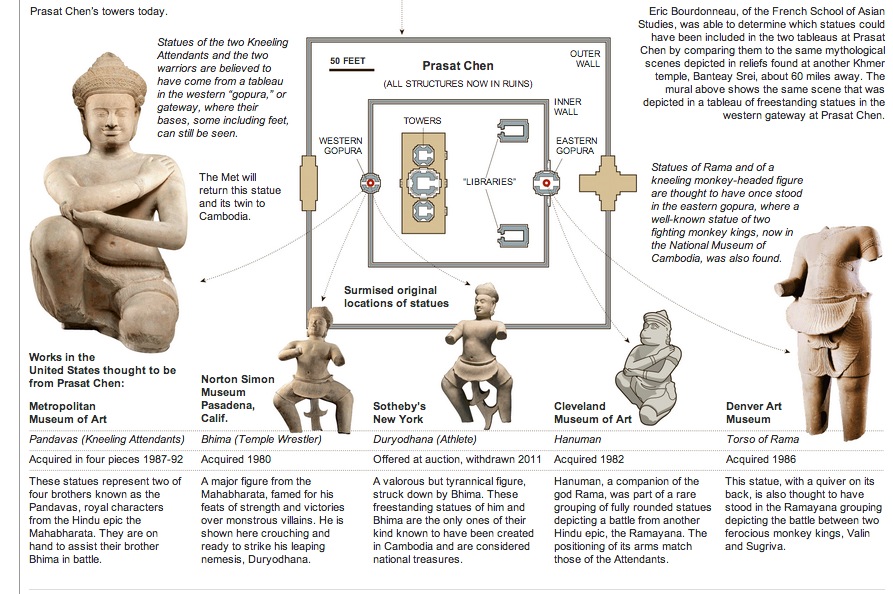 While the returns are being negotiated by Cambodian authorities, archaeologists with the French School of Asian Studies (EFEO) have been busy reconstructing the Koh Ker temples with the tools of virtual reality. By sewing together thousands of digital pictures of the sculptures into 3D images, they’ve re-created their original context in the now ruined temples. At EFEO’s website you can watch a remarkable video showing what the site might have looked like soon after its construction by Jayavarman IV.
While the returns are being negotiated by Cambodian authorities, archaeologists with the French School of Asian Studies (EFEO) have been busy reconstructing the Koh Ker temples with the tools of virtual reality. By sewing together thousands of digital pictures of the sculptures into 3D images, they’ve re-created their original context in the now ruined temples. At EFEO’s website you can watch a remarkable video showing what the site might have looked like soon after its construction by Jayavarman IV.
One of those behind this work – and some of the original detective work that linked them to the temple – is French archaeologist Eric Bourdonneau. He graduated from the Sorbonne with degrees in Archaeology and Oriental Studies. His 2005 Phd was entitled “Indianization and Formation of the State in South-East Asia: A reappraisal of the Historiography of the last Thirty Years.” He has been a lecturer at the EFEO since 2007.
Here’s my Q and A with Bourdonneau.
Q: How did you become involved in the case involving the Duryodhana at Sotheby’s?
Let’s talk first about the Bhima statue at the Norton Simon Foundation.* As far as I know, the connection between the Prasat Chen and this statue (published in Bunker and Latchford 2004) seems to have been made for the first time by a member of the GACP team (a stone conservation German project) who sent a short letter to Unesco in 2007 (I was informed about this letter quite late in 2011). Personally, I saw the pedestal of the statue during the first archaeological campaign I made in Koh Ker in 2009. I made also the connection with the Norton Simon statue that I identified then as a statue of a fighting Bhima … and so concluded that the other pedestal close at hand was for a Duryodhana. But, at that time, I didn’t know of any image of this Duryodhana.
I saw it for the first time at the end of 2010 when I presented my work to my colleagues of Guimet Museum, Pierre Baptiste and Thierry Zéphir. They showed me a photo of this statue, a photo that was in the Museum Archives but with no information about its origin, its identification or its localization. The next step was just one week before the sale in New York (March 2011). I was informed almost by accident (I was probably the last one to be informed among those concerned by the sale…). Ironically it was a collector that told me that a statue of “Koh Ker style” would be on sale. I prepared straight after a report (with photos, dimensions and iconographical “demonstration”) and sent it to Unesco office in Phnom Penh (where people were wondering about the authenticity and the provenance of this statue) and this report, I was told, was immediately transmitted to Cambodian Ministry of Culture.
I also made several presentations since 2009 and published a quite long article in 2011 where I explained why these statues should be identified with the two images of Bhima and Duryodhana at Prasat Chen and why there was little doubt that the two “Met pieces” (the Pandava brothers), among others, came from the same building.
Q: How did you ultimately make the match between the sculpture and its feet?

The abandoned feet at Koh Ker superimposed on the Temple Warrior at the Norton Simon, from a report to UNESCO by researcher Simon Warrack.
It is not so difficult. The position, the style, the dimensions (e.g. dimensions of the breaks at the ankles, taken in situ) left not much doubt. It is a little more difficult to show that such a statue could come only from Prasat Chen and not from another temple. The iconographic analysis is essential for that.
Q: Have you found any other matches to objects missing from Koh Ker or other Cambodian sites? Where are these objects today?
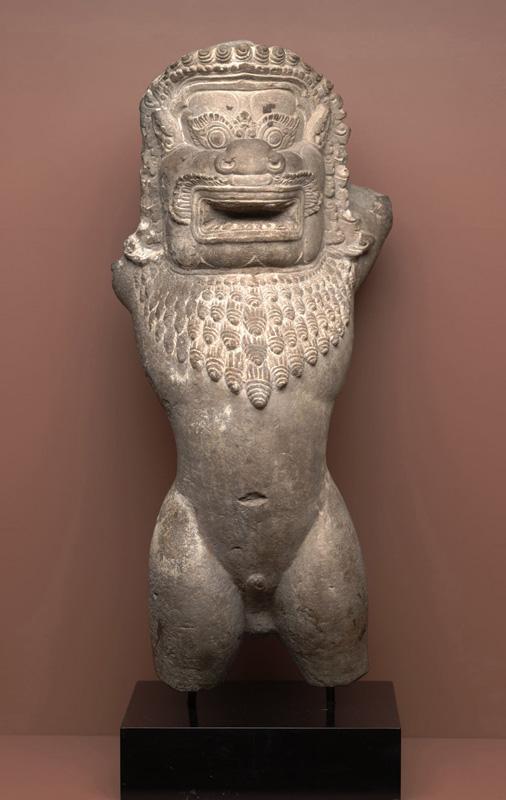 There are indeed a quite significant number of similar cases. The most obvious are those for which where we have photos in the archives: for example, the Ganesha from Prasat Bak or the lion (right) from the Shiva pedestal in Prasat Thom (and today in Dallas Museum). Many of them are now in private collections so it is not easy to know their current location. At least it is possible to know when and where they were sold thanks to sale catalogues published by auction houses.
There are indeed a quite significant number of similar cases. The most obvious are those for which where we have photos in the archives: for example, the Ganesha from Prasat Bak or the lion (right) from the Shiva pedestal in Prasat Thom (and today in Dallas Museum). Many of them are now in private collections so it is not easy to know their current location. At least it is possible to know when and where they were sold thanks to sale catalogues published by auction houses.
Q: The Duryodhana and the Met’s Kneeling Attendants have been returned. Others may soon follow. Where will these objects be displayed in Cambodia? What significance does this have for the local people?
I have no precise information about this. But, of course, they will be exhibited. You better have to ask to Cambodians themselves. Obviously they have many reasons to be proud of their heritage and to celebrate the return of these remarkable pieces. It is important to remind what we are talking about: a deliberate destruction that did not care about the integrity of the artworks, provided that there were people ready to purchase them.
The state of conservation of these artworks in stone was remarkably good as they were still buried when looted. It is maybe not useless to say again, as Elizabeth Becker rightly wrote in NY Times, that the fury of the Khmer Rouge was, sadly, directed much more against people than stones: in Koh Ker, the only traces of vandalism, of which there are many, are those left by the modern looters whose spoils fed the art market (some of them can be seen on the knees of the two “MET statues”, cut hastily and coarsely from their pedestals with dozens of blows of a chisel).
It is hardly understandable how the purchasers of the objects could be “rescuers” working for the protection of heritage, as it has been said. As you know, they actually were those to whom the damaged statues were destined and the unique raison d’être of this vandalism. For this same reason, they are certainly not working for a better “understanding of Khmer culture.”
The so-called Sotheby’s or MET statues, like many of their kind extracted from their original surroundings, have remained impossible to understand as long as we have not been able to replace them in the temples where they were erected, that is, as long as we have not restored what was destroyed forty or thirty years ago by the looters.
What is at stake here is not only “heritage” but history.
*We’ve edited Eric’s response to make clear he was referring here to the Bhima, not the Duryodhana.
Blood Antiquities: After Lengthy Fight, Sotheby’s Agrees to Return Looted Khmer Statue
Sotheby’s and a private collector agreed on Thursday to forfeit a 10th century statue of a warrior to Cambodia, ending a lengthy legal fight that exposed the trafficking of looted Khmer antiquities to museums and collectors around the world.

The agreement states that Sotheby’s will transfer the statue of Duryodhana to Cambodia within 90 days in exchange for the U.S. government dropping a lawsuit brought on behalf of the Cambodian government. The suit claimed the auction house and Belgian collector Decia Ruspoli di Poggio Suasa had attempted to sell the statue in 2011 despite their knowledge that it had been looted from a Cambodian temple.
There was never any doubt about whether the statue had been looted, or where it had been found. As we wrote in April 2012, internal emails cited in the case revealed that Sotheby’s officials were warned by an expert that the statue had been stolen from the Khmer temple of Prasat Chen, in Koh Ker, and that its public sale might lead to a legal claim.
 “The Cambodians in Pnom Penh now have clear evidence that it was definitely stolen from Prasat Chen at Koh Ker, as the feet are still in situ…The two Dvarapalas must have stood close together and their feet remain, so it’s pretty clear where they came from,” wrote Emma Bunker, a leading expert on Khmer art and close associate of Douglas Latchford, the Bangkok dealer who allegedly bought it from looters and exported it from Thailand. “It is also possible that the Cambodians might block the sale and ask for the piece back,” she added. “I’m sorry as I had some exciting things to say about it, but I don’t think Sotheby wants this kind of potential problem.”
“The Cambodians in Pnom Penh now have clear evidence that it was definitely stolen from Prasat Chen at Koh Ker, as the feet are still in situ…The two Dvarapalas must have stood close together and their feet remain, so it’s pretty clear where they came from,” wrote Emma Bunker, a leading expert on Khmer art and close associate of Douglas Latchford, the Bangkok dealer who allegedly bought it from looters and exported it from Thailand. “It is also possible that the Cambodians might block the sale and ask for the piece back,” she added. “I’m sorry as I had some exciting things to say about it, but I don’t think Sotheby wants this kind of potential problem.”
Sotheby’s officials decided that while it might receive bad press from “academics and ‘temple huggers,’” the potential profits from the sale made it “worth the risk,” internal emails showed.
Thursday’s agreement to forfeit the statue shows that calculation was decidedly wrong. Sotheby’s could have returned the statue to the collector and let her decide its fate, as auction houses have often done when claims arise. It also could have accepted a $1 million offer from a private collector who sought to buy the statue on Cambodia’s behalf. Instead Sotheby’s opted to fight it out in court – at considerable cost to both its bank account and its reputation.
 One of the lingering questions from the case is, why? Some have pointed to the personalities involved in the case, which pit the US Attorney’s office in the Southern District of New York against Jane Levine, one of the former stars of its cultural property crimes unit who now works as Sotheby’s Director of Worldwide Compliance. In a series of bare-knuckled filings, the government accused Levine of providing “false and misleading information to the Government.” Levine pushed back, accusing investigators of misleading the auction house about having probable cause for the statue’s seizure.
One of the lingering questions from the case is, why? Some have pointed to the personalities involved in the case, which pit the US Attorney’s office in the Southern District of New York against Jane Levine, one of the former stars of its cultural property crimes unit who now works as Sotheby’s Director of Worldwide Compliance. In a series of bare-knuckled filings, the government accused Levine of providing “false and misleading information to the Government.” Levine pushed back, accusing investigators of misleading the auction house about having probable cause for the statue’s seizure.
Another theory, floated this weekend at a UN-sponsored conference in Courmayeur by a prominent retired art crimes investigator, is that Sotheby’s may have taken on partial ownership of the statue. Why else would it spend what were likely hundreds of thousands of dollars in legal fees defending someone else’s problematic statue?

Attention now shifts to other Khmer statues likely acquired through the same smuggling network. Over the past year we and others have traced objects from Koh Ker and other sites that passed through the hands of Douglas Latchford before ending up in museums across the United States and Europe. The case for the return of those objects has now grown much stronger.

In May, the Metropolitan Museum of Art agreed to return its two Khmer Kneeling Attendants, which it acquired from Latchford and other donors. The decision was reached after museum officials traveled to Cambodia and were presented with “dispositive” evidence of the statues’ illicit origins. The Met continues to possess several other objects tied to Latchford that have not been returned.
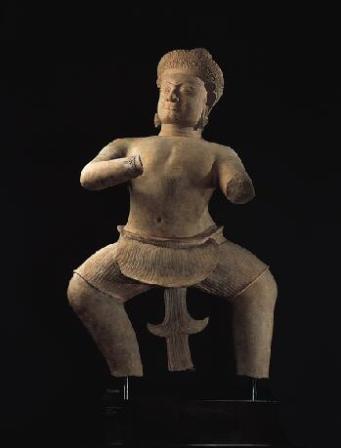
Officials from the Norton Simon will soon travel to Cambodia to discuss the museum’s statue of Bima, whose feet remain in the Koh Ker temple next to those of its companion, the Durydhana that Sotheby’s has just agreed to return. The Bima was purchased in 1976 from New York dealer William H. Wolff. The museum may well consider the words of its founder. When asked about repatriation of looted antiquities, Norton Simon once told the New York Times: “If it did some good, I would return it. If there were reason and probability that smuggling could be stopped, I would do it. It would do a lot to establish a constructive relationship between nations….Looting is a terribly destructive process. In cutting works out of temples, thieves mutilate them.”
Cambodia has indicated it is preparing to makes similar claims against Khmer statues tied to Latchford at the Kimbell Museum, the Cleveland Museum and the Denver Art Museum. Many more exist in private collections.
The owners of these blood antiquities would be wise to learn from Sotheby’s experience and not wait for a demand from the U.S. Attorney’s office.
Here’s the stipulation Sotheby’s signed on December 12th agreeing to the statue’s return.
Gloves Come Off: Amid Accusations of Deceit, Sotheby’s Lawsuit Reveals How U.S. Built Its Case
Last week the tables were turned on the U.S. government as documents filed in court by Sotheby’s revealed the private deliberations of American investigators, whose zeal for the return of an allegedly looted 10th century Khmer statue often appears to exceed that of Cambodian officials.
In December, we wrote that filings in the court battle between the U.S. government and Sotheby’s over the statue had revealed the inner workings of the top international auction house. Last November we described how the case had revealed the underbelly of the illicit antiquities trade.
Now it’s the U.S. government’s turn. The exhibits, obtained through discovery in late August and attached to a Sept. 9th Sotheby’s motion for judgment, provide a rare window into the investigation of a major international cultural property case whose outcome will likely hold sway for years. The emails detail how Interpol officials worked close with Brent Easter, an investigator of cultural property crimes at Immigration and Customs Enforcement, to build a legal rationale for the statue’s seizure on behalf of Cambodia. The process eventually involved officials at the U.S. Department of State, the American Embassy in Phnom Penh and the Cambodian government. At one point, Easter asked Cambodian officials to stop negotiating with Sotheby’s for the statue’s voluntary return so that the U.S. government could purse its legal case against the auction house.
Read the correspondence:
Sotheby’s cites the records in asking the judge for a ruling on the case without the need for further discovery. The auction house says Easter claimed to have probable cause for seizure of the statue when in fact he was still scrambling to cobble together a legal theory to support Cambodia’s claim. The auction house also cites an expert on French law in arguing that the government’s legal theory — which relies in part on colonial-era decrees for Cambodia’s ownership claim — is bogus.
Read Sotheby’s motion:
The government rebuts Sotheby’s motion in a Sept. 11th letter to the judge, arguing, among other things, that “Sotheby’s provided false and misleading information to the Government.” To support its claim, the government cites a March 22, 2011 email between ICE’s Easter and Jane Levine, a former assistant US Attorney in the Southern District of New York specialized in cultural property crimes who now works as Sotheby’s Director of Worldwide Compliance. Easter asked Levine whether Sotheby’s had “solid provenance information” for the statue. Levine said they did, noting Sotheby’s had “identified two individuals who presently have no financial interest in the property and who personally saw the piece in London in the late 1960s.”
 Rather than take Levine at her word, Easter pursued the original documentation for the statue, which had been passed from the London auction house Spink and Sons to Christies. Remarkably, the Spink records indicate the statue was stolen from the Cambodian temple of Prasat Chen in 1972, according to the government letter. This is the first hint of documentary evidence to support the government’s claim of the statue’s theft. What else might be contained in the archives of Spink, which was dealer Douglas Latchford‘s primary pass through for allegedly looted Khmer antiquities? Could this archive also be the source of the “dispositive evidence” of looting cited by the Met in its recent return of two looted Khmer attendants to Cambodia?
Rather than take Levine at her word, Easter pursued the original documentation for the statue, which had been passed from the London auction house Spink and Sons to Christies. Remarkably, the Spink records indicate the statue was stolen from the Cambodian temple of Prasat Chen in 1972, according to the government letter. This is the first hint of documentary evidence to support the government’s claim of the statue’s theft. What else might be contained in the archives of Spink, which was dealer Douglas Latchford‘s primary pass through for allegedly looted Khmer antiquities? Could this archive also be the source of the “dispositive evidence” of looting cited by the Met in its recent return of two looted Khmer attendants to Cambodia?
Read the government’s letter:
As it turns out, the two individuals Levine cited were Latchford, who the government alleges “conspired with the looting network to steal it from Prasat Chen,” and his colleague Emma Bunker, who later told Sotheby’s the statue was “definitely stolen.” Not exactly disinterested parties, and the government accuses Levine of deception: “The information provided by Levine was simply false.”
The next hearing in the case is scheduled for Oct 14th.
Posted in News
Tagged Brent Easter, Cambodia, Douglas Latchford, Emma C. Bunker, Immigration and Customs Enforcement, Jane Levine, Sotheby's
UPDATED: The Met Returns Two Khmer Statues to Cambodia, Citing Clear Evidence Of Looting
 UPDATE: The New York Times reported May 15 that Cambodia is also planning to ask for the return of a statue of Hanuman at the Cleveland Museum of Art. This is in addition to the Norton Simon Bhima and the Denver Rama we’ve written about previously, which Cambodian officials also want returned. All are said to have been taken from the same temple complex at Koh Ker. Neither Cleveland nor Denver would disclose the origins or collecting histories of the contested statues.
UPDATE: The New York Times reported May 15 that Cambodia is also planning to ask for the return of a statue of Hanuman at the Cleveland Museum of Art. This is in addition to the Norton Simon Bhima and the Denver Rama we’ve written about previously, which Cambodian officials also want returned. All are said to have been taken from the same temple complex at Koh Ker. Neither Cleveland nor Denver would disclose the origins or collecting histories of the contested statues.
The Metropolitan Museum of Art has agreed to return two ancient Khmer statues to Cambodia after reviewing clear evidence that they were looted. Here’s Jason’s story in Friday’s LA Times:
The Metropolitan Museum of Art has agreed to return two ancient statues to Cambodia after receiving convincing evidence they had been looted and smuggled out of the country illegally.
The 10th century Khmer statues, known as the Kneeling Attendants, have flanked the entrance to the Met’s South East Asian galleries for years and are among the museum’s most prized objects from the region.
They were acquired in fragments between 1987 and 1992 as donations primarily from Douglas Latchford, a British collector based in Bangkok who is at the center of a federal investigation of antiquities looted from the ancient temple complex of Koh Ker.
Cambodian officials announced last June that they would seek the return of the statues. At the time, Met officials said they had no information to indicate the statues were stolen.
On Friday, the Met would not release details on what information led it to decide to return the statues, but noted recent press reports and information provided by UNESCO officials, who have been investigating looting in Cambodia.
“All I can say is that sufficient evidence came to light,” said museum spokesman Harold Holzer. “It was dispositive and more than satisfied the director.”
The returns suggest Cambodia has found substantial evidence to support its claim that several American museums possess looted antiquities that were illegally exported by Bangkok-based dealer Douglas Latchford. Latchford has denied the claim.
We’ve previously identified several other museums that acquired Khmer antiquities from Latchford: The Norton Simon Museum, the Kimbell Museum, the Denver Art Museum and the Berlin Museums. The Met continues to possess several other antiquities tied to Latchford that will not be returned in the deal announced Friday.
The Met’s returns will also have an impact on the on-going lawsuit in which the US government is seeking the return of a Khmer warrior statue at Sotheby’s. See here for our complete coverage of the case , including court documents that detail the government’s evidence.
UPDATED: Latchford’s Footprints in Berlin: A Khmer Ganesh and other loans to the Asian Art Museum
Recently, someone suggested we look into the ties between Douglas Latchford and the Berlin Asian Art Museum, where he is said to have enjoyed a “special arrangement” for several years.
 As you’ll recall, Latchford is the Bangkok-based British collector who was the source of the looted 10th Century Khmer statues now held by Sotheby’s and the Norton Simon museum. The Sotheby’s statue is the subject of a federal seizure lawsuit brought by the U.S. government on behalf of Cambodia, which claims the statue was illegally removed from the country in the 1970s. The government alleges that Latchford, identified in court records as “the Collector,” knew the statue had been looted from Koh Ker and conspired with Spink and Son auction house to fraudulently obtain export licenses for the statue in 1975. Latchford has denied the allegations.
As you’ll recall, Latchford is the Bangkok-based British collector who was the source of the looted 10th Century Khmer statues now held by Sotheby’s and the Norton Simon museum. The Sotheby’s statue is the subject of a federal seizure lawsuit brought by the U.S. government on behalf of Cambodia, which claims the statue was illegally removed from the country in the 1970s. The government alleges that Latchford, identified in court records as “the Collector,” knew the statue had been looted from Koh Ker and conspired with Spink and Son auction house to fraudulently obtain export licenses for the statue in 1975. Latchford has denied the allegations.
We’ve previously tracked Khmer art tied to Latchford to the Metropolitan Museum of Art, the Kimbell Art Museum, the Norton Simon Museum and the Denver Art Museum, where his partner Emmy Bunker is a research consultant. In March, a federal judge in New York found sufficient evidence for the US government to proceed with its forfeiture case against the Sotheby’s statue.
Latchford’s ties to the Berlin museum have not previously been reported, and the museum initially declined to answer questions about the loans. Only when we inquired about a specific piece — a statue of Ganesh from Koh Ker — did the museum provide a partial response. “The Museum of Indian Art (today part of the Asian Art Museum) in Berlin borrowed four objects from Mr. Latchford for certain projects between 2000 and 2006,” said spokeswoman Birgit Jöbstl. “It has not purchased any objects from Mr. Latchford. The loans were taken for curatorial reasons, to complete the narrative of the museum.”
One of those four objects was the sandstone Ganesh from Koh Ker.
UPDATE 5/16: The Berlin Museum has yet to respond to our request of April 8 for information about the other three objects loaned by Latchford. German TV producer Wolfgang Luck has had…ehem…better luck. Here is the response he received from the museum almost immediately (translated from German):
Two objects (a pre-Khmer Buddha, No. 259 in the catalog „Magische Götterwelten (Magic Worlds of Gods) and a female Khmer-figurine, No. 260 in the catalog „Magische Götterwelten”) had been lent on occasion of the museum’s opening in the year 2000. The objects were important pieces of the museum’s permanent exhibition. The contract on the lending of the objects expired in December 2004. The Buddha was given back. As a “replacement” Mr. Latchford lent the above mentioned Ganesha-figurine to the museum. The contract on the lending of the female Khmer-figurine was prolonged until the end of 2005, thereafter it was given back as well. The fourth object, a Vishnu, arrived at the museum at the beginning of 2006 and was on display there until its return to Mr. Latchford in February 2007.”
Museum spokeswoman Birgit Jöbstl took issue with our characterization of the loans as evidence of a special relationship, telling Luck, “Within the described contracts on lending there were no extraordinary agreements.” However, she goes on to acknowledge the museum did not follow its own due diligence standards when accepting the statues, which have no documented ownership history:
With regard to the examination of the objects’ provenance we must unfortunately assume that no other documents were obtained from Mr. Latchford than his personal confirmation and the information published in Bunker/Latchford: Adoration and Glory: The Golden Age of Khmer Art (2004). According to the UNESCO Convention of 1970 the Prussian Cultural Heritage Foundation does not acquire objects, the lawful provenance or importation of which is doubtful. For several years now the Prussian Cultural Heritage Foundation has been maintaining this attitude also towards items of loan. Unfortunately this standard was not yet maintained with the above mentioned objects lent to the museum by Mr. Latchford.
We also note that the authors of the above-cited publication, “Magische Götterwelten,” were several Berlin Museum officials, including Marianne Yaldiz. Look for Wolfgang Luck’s 1 hour documentary on the case sometime next year on the German-French station ARTE.
Now, back to the Koh Ker Ganesh…
 The statue representing the elephantine Hindu deity, worshiped even today as the Remover of Obstacles and Lord of Beginnings, arrived at the Berlin museum in December 2004 and was given prominent display at the museum’s entrance. It was described as being on loan from “an American private collection,” but in fact it had come from Latchford. Soon after it arrived, the piece was published in the museum’s journal Indo-Asiatische Zeitschrift
The statue representing the elephantine Hindu deity, worshiped even today as the Remover of Obstacles and Lord of Beginnings, arrived at the Berlin museum in December 2004 and was given prominent display at the museum’s entrance. It was described as being on loan from “an American private collection,” but in fact it had come from Latchford. Soon after it arrived, the piece was published in the museum’s journal Indo-Asiatische Zeitschrift GIAK. Its only previous publication had been in Latchford and Bunker’s 2004 catalog “Adoration and Glory: The Golden Age of Khmer Art” (pp. 168-70.)
The GIAK Indo-Asiatische Zeitschrift article pointed to the striking similarities between the statue and a Ganesh photographed during the 1939 Parmentier expedition to Koh Ker. It had since disappeared, presumably looted. “This work represents an exact counterpart of the present image both in terms of shape and size,” the article noted. “Even in minute details, both figures seem to be quite similar. However, they wear different types of necklaces, and carved nipples are absent on the Berlin Ganesha…Both the figures are probably products of the same workshop, and both of them may have served as cult images.”
Some scholars had already pointed out the similarities with some suspicion. Betrand Porte suggested in an article in Arts Asiatiques (59, 2004) that the Berlin Ganesh may be the same one shown in the Parmentier photos, with a few details carefully altered to disguise its looted origins. Jean Baptiste and Thierry Zéphir suggested in the same publication that the question could be cleared up with a close scientific analysis. But when a museum consultant suggested testing the statue, the museum’s director Marianne Yaldiz reportedly grew upset. Latchford and Bunker provided a report of a visual examination conducted by Pieter Meyers — the same Los Angeles expert used when doubts arose in Sotheby’s investigation — that concluded the Berlin statue had not been altered. Soon after, the consultant left the museum.
The consultant would not comment and Yaldiz, who retired in 2006, could not be reached. The scientific analysis was never conducted. The Ganesh was removed from display in December 2006, and its whereabouts are currently not known.
In a statement, the museum spokeswoman said, “For all loans, the museum observed due diligence according to the Berlin museums’ general practice, and there was at that time no reason to question the integrity of the lender…The Asian Art Museum, like all other collections of the Staatliche Museen zu Berlin – Preussischer Kulturbesitz, observes due diligence before borrowing or buying objects. It thereby works according to the standards set by the UNESCO Convention on the Means of Prohibiting and Preventing the Illicit Import, Export and Transfer of Ownership of Cultural Property of 1970.”
Given that commitment to UNESCO principals, we have asked the Berlin museum to provide details about its due diligence for the Latchford loans. What documented ownership history was provided with the loans? What assured the museum that the objects were not the product of modern looting? Where are they today? Why was the Ganesh described as coming from an American collection, when it fact it came from Latchford? And what purpose did the “special arrangement” with Latchford serve, aside from boosting the value of the objects for later sale?
The museum has so far declined to answer those questions. We’ll post a response when we receive it.
BREAKING: Judge rules in favor of Cambodia, Denies Sotheby’s Motion to Dismiss Claim to Khmer Statue
A New York judge has denied Sotheby’s motion to dismiss Cambodia’s claim — brought on its behalf by the US government — that a 10th century Khmer statue was looted and should be returned.
District court judge George B. Daniels ruled on Thursday that the government has “sufficiently pled facts regarding Sotheby’s knowledge that the Statue was stolen at the time of import into the United States.” He also found the government had presented sufficient evidence that Douglas Latchford, the British collector who initially sold the statue, “knew the statue had been looted from Koh Ker.”
The ruling, which dismissed several of Sotheby’s key arguments, is not a final ruling but allows the case to proceed. You can find our complete coverage of the case, including past legal filings, here.
Here is Daniels’ 18-page ruling:
Latchford’s Footprints: Suspect Khmer Art at the Kimbell and the Met
We’re continuing to trace suspect Cambodian antiquities linked to Douglas Latchford, the man at the center of the on-going federal looting probe that we’ve detailed in previous posts here. Last week we wrote about suspect Khmer antiquities at the Denver Art Museum. Here are our latest finds:
The Kimbell Art Museum

In 1988, the Kimbell Art Museum purchased an important 7th century Khmer sculpture from Latchford.
At the time of purchase, the statue had no documented ownership history. The only record the Kimbell obtained about its origins was a signed guarantee from Latchford claiming the statue had been in his possession in Thailand since 1968 and had legally been shipped to the UK in 1987, a museum spokeswoman said.
Latchford has made similar claims about contested Khmer statues at Sotheby’s and the Norton Simon Museum that are now the focus on a federal lawsuit. Federal investigators have alleged in court filings that Latchford purchased those statues after they were looted in the early 1970s and smuggled to Thailand, a claim Latchford denies. (See our previous coverage of the case here.)
The statue represents Harihara, a Hindu deity that combined the destructive force of Shiva and the creative power of Vishnu. The statue’s style suggests the piece came from the pre-Angkor ruins of Prasat Andet, in central Cambodia. The Kimbell has no evidence of legal export from Cambodian, a museum spokeswoman confirmed.
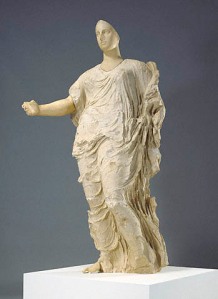 Acquiring an object based exclusively on a dealer’s warranty — rather than an actual documented ownership history that proves it was not looted — was a common tactic in the 1980s, particularly for pieces that were likely looted. As we described in Chasing Aphrodite, the J. Paul Getty Museum passed a new acquisition policy for antiquities in 1987 that called for a dealer warranty in place of an inquiry into an object’s origins. The practice allowed the Getty to continue acquiring objects it knew or suspected had been looted — including an $18 million statue of Aphrodite — while providing a modicum of legal and public relations cover if the statue were later questioned. But the policy failed: The Getty returned the Aphrodite to Italy in 2010 after our investigation in the LA Times made clear the dealer warranty was a thin cover for the truth — the statue had been looted from an archaeological site in central Sicily.
Acquiring an object based exclusively on a dealer’s warranty — rather than an actual documented ownership history that proves it was not looted — was a common tactic in the 1980s, particularly for pieces that were likely looted. As we described in Chasing Aphrodite, the J. Paul Getty Museum passed a new acquisition policy for antiquities in 1987 that called for a dealer warranty in place of an inquiry into an object’s origins. The practice allowed the Getty to continue acquiring objects it knew or suspected had been looted — including an $18 million statue of Aphrodite — while providing a modicum of legal and public relations cover if the statue were later questioned. But the policy failed: The Getty returned the Aphrodite to Italy in 2010 after our investigation in the LA Times made clear the dealer warranty was a thin cover for the truth — the statue had been looted from an archaeological site in central Sicily.
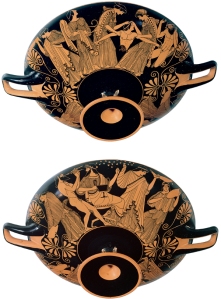 The Kimbell believes the Harihara is the only object in its collection with ties to Latchford, but can’t be certain, a museum spokeswoman said. It is not the only suspect piece of ancient art to surface at the museum. In February, we wrote about the Kimbell’s 5th century BC Greek cup by the Douris painter. After we noted the cup’s ownership history had been traced to Elie Borowski, a dealer who has been linked to the illicit trade in Classical antiquities, the Kimbell announced it would publish the cup on a registry of objects maintained by the Association of Art Museum Directors. The cup was never listed in the registry — likely because it was acquired prior to 2008, when the directors group began requiring suspect antiquities to be posted. (This leaves the question: where should suspect antiquities acquired before 2008 be posted publicly to encourage further provenance research? Museums should be publishing the complete known provenance of all their antiquities, but don’t. We’ve proposed our own answer.)
The Kimbell believes the Harihara is the only object in its collection with ties to Latchford, but can’t be certain, a museum spokeswoman said. It is not the only suspect piece of ancient art to surface at the museum. In February, we wrote about the Kimbell’s 5th century BC Greek cup by the Douris painter. After we noted the cup’s ownership history had been traced to Elie Borowski, a dealer who has been linked to the illicit trade in Classical antiquities, the Kimbell announced it would publish the cup on a registry of objects maintained by the Association of Art Museum Directors. The cup was never listed in the registry — likely because it was acquired prior to 2008, when the directors group began requiring suspect antiquities to be posted. (This leaves the question: where should suspect antiquities acquired before 2008 be posted publicly to encourage further provenance research? Museums should be publishing the complete known provenance of all their antiquities, but don’t. We’ve proposed our own answer.)
The Metropolitan Museum of Art
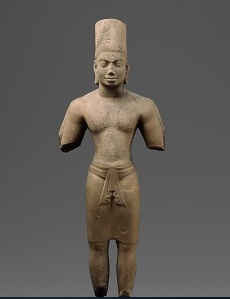 While researching the Kimbell’s Harihara, we noticed that The Metropolitan Museum of Art purchased a similar Harihara, also linked to Prasat Andet, in 1977. We’ve asked the Met for the provenance of the statue, as none is listed on their website.
While researching the Kimbell’s Harihara, we noticed that The Metropolitan Museum of Art purchased a similar Harihara, also linked to Prasat Andet, in 1977. We’ve asked the Met for the provenance of the statue, as none is listed on their website.
The Met also has several pieces from Latchford. The New York Times has previously noted that Cambodia will ask the museum to return its two prominently displayed Standing Attendants, which also came through Latchford from Koh Ker. As Paul Barford has noted, the knees of those statues bear clear signs of having been hacked from a base by looters. (The Met’s high resolution photos and zoom tool are quite useful here.) 
David Gill has also noted that the statues came to the museum in fragments from different sources acquired over several years and were reassembled at the Met. Martin Lerner, the Met’s former Asian Art curator, noted the happy coincidence in the catalog: “It is particularly gratifying that the monumental bodies join up with heads already in the collection.” This appears similar to a pattern we’ve seen in objects passed through smuggling networks that dealt in Classical antiquities, the so-called “fragments game” identified by Italian investigators and noted by Gill here.
Gill has also helpfully identified several other Latchford donations at the Met:
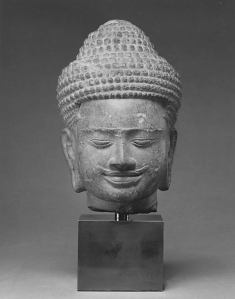 A 10th century Khmer Head of Buddha acquired in 1983 as a gift from Latchford. (1983.551)
A 10th century Khmer Head of Buddha acquired in 1983 as a gift from Latchford. (1983.551)
A 12th century Bodhisattva from Nepal acquired in 1989 as a gift from Spink & Son Ltd. and Douglas A. J. Latchford. (1989.237.1)
A bronze 9th century Bodhisattva Maitreya from Thailand acquired in 1989 as a gift from Spink & Son Ltd. and Douglas A. J. Latchford. (1989.237.2)
A 2nd century Ghandaran plaque from Pakistan acquired as gift of Spink & Son Ltd. and Douglas A. J. Latchford in 1989. (1989.237.3)
 The gifts suggest several things: Latchford was a generous donor to the Met over several years, and dealt not just in Khmer art but also material from South Asia. It would be worth perusing the Met’s 1994 catalog of Asian Art for other examples of material from South East Asia. For example, given the history of looting at Koh Ker, we were interested in how this gilt bronze statue of a king from Kor Ker (left) ended up in the collection Walter Annenberg before being acquired by the Met in 1988.
The gifts suggest several things: Latchford was a generous donor to the Met over several years, and dealt not just in Khmer art but also material from South Asia. It would be worth perusing the Met’s 1994 catalog of Asian Art for other examples of material from South East Asia. For example, given the history of looting at Koh Ker, we were interested in how this gilt bronze statue of a king from Kor Ker (left) ended up in the collection Walter Annenberg before being acquired by the Met in 1988.
We’ll continue looking for Latchford objects in other museums. If you’ve got any tips, drop us at line at ChasingAphrodite@gmail.com

